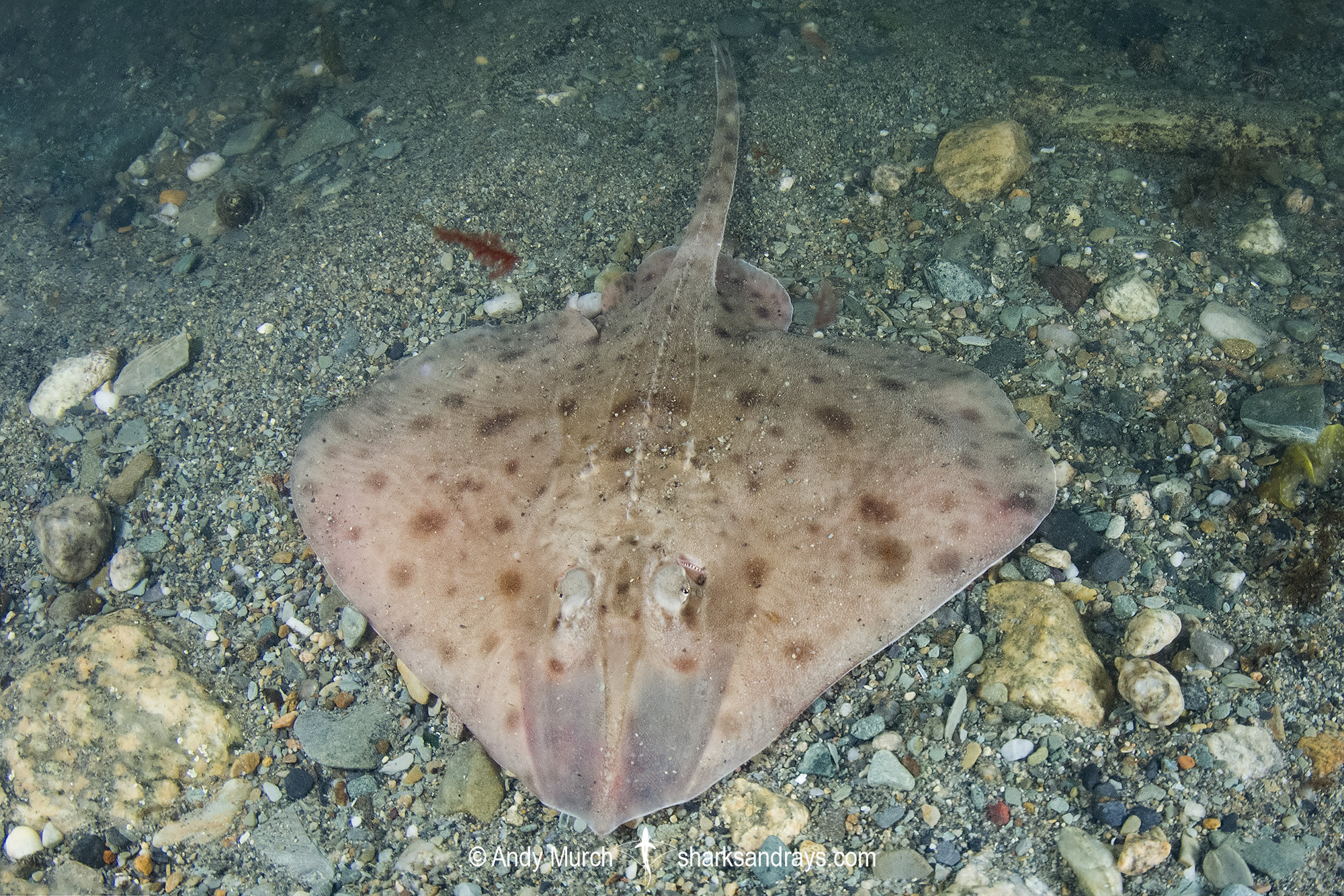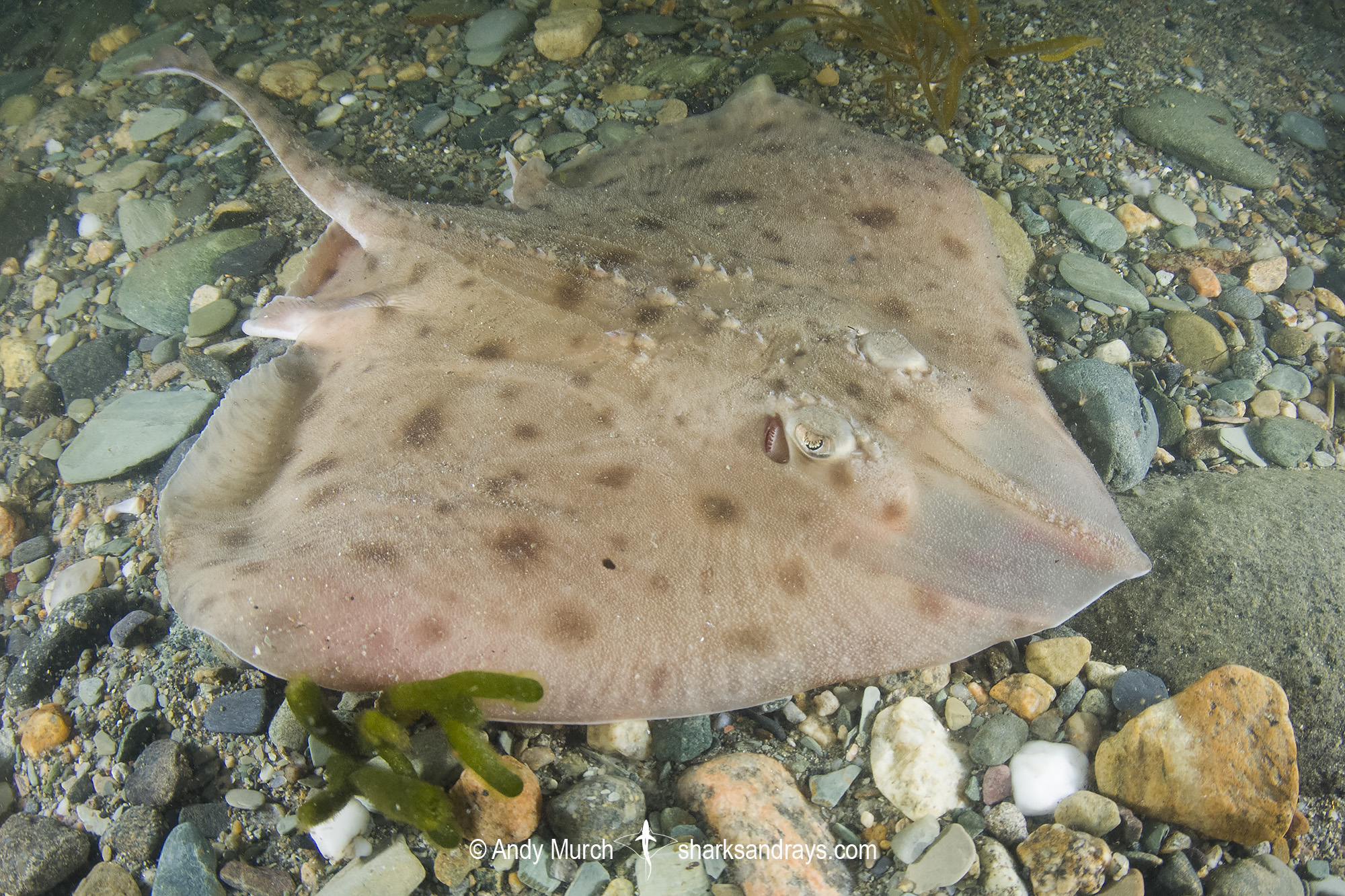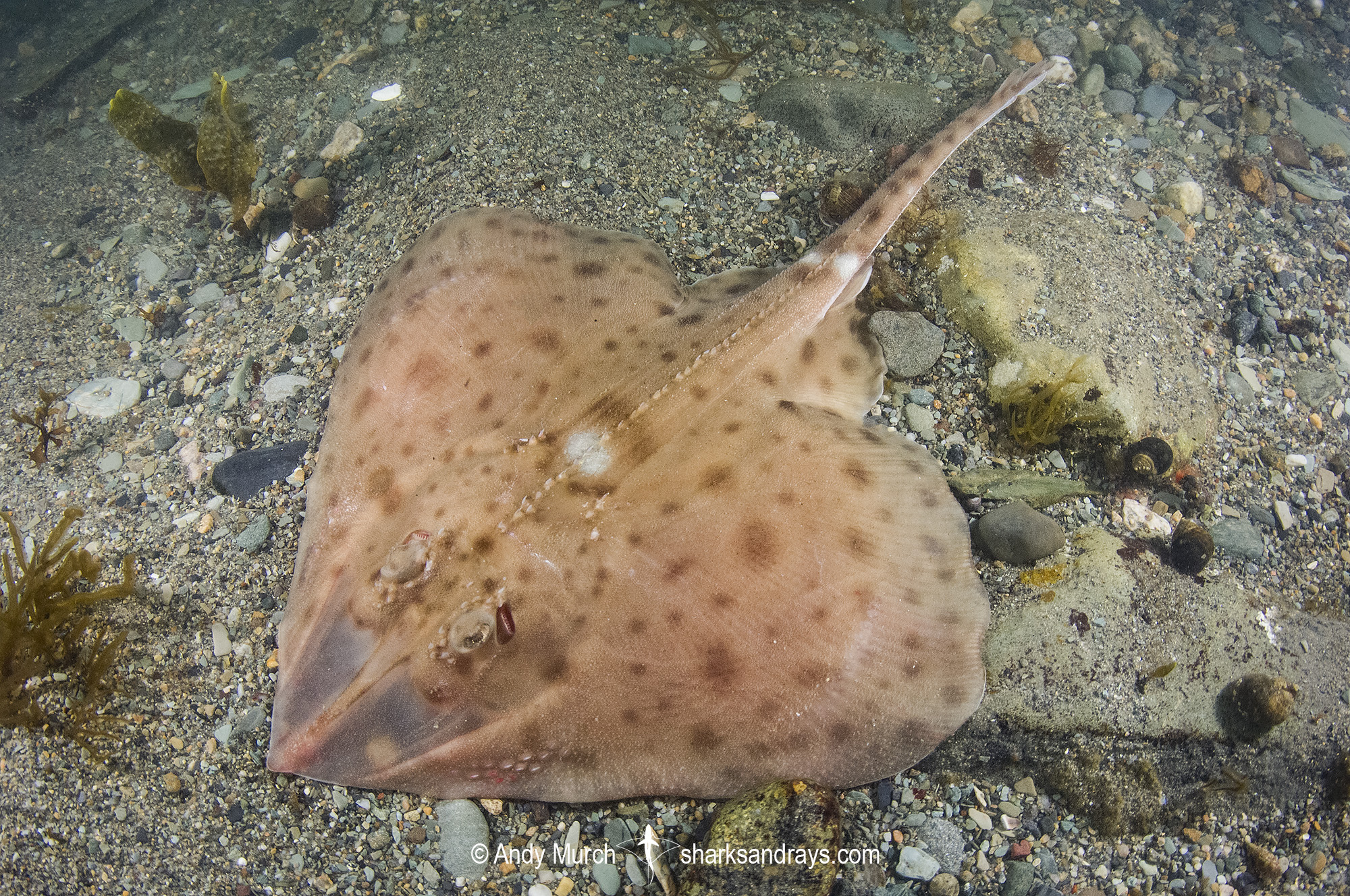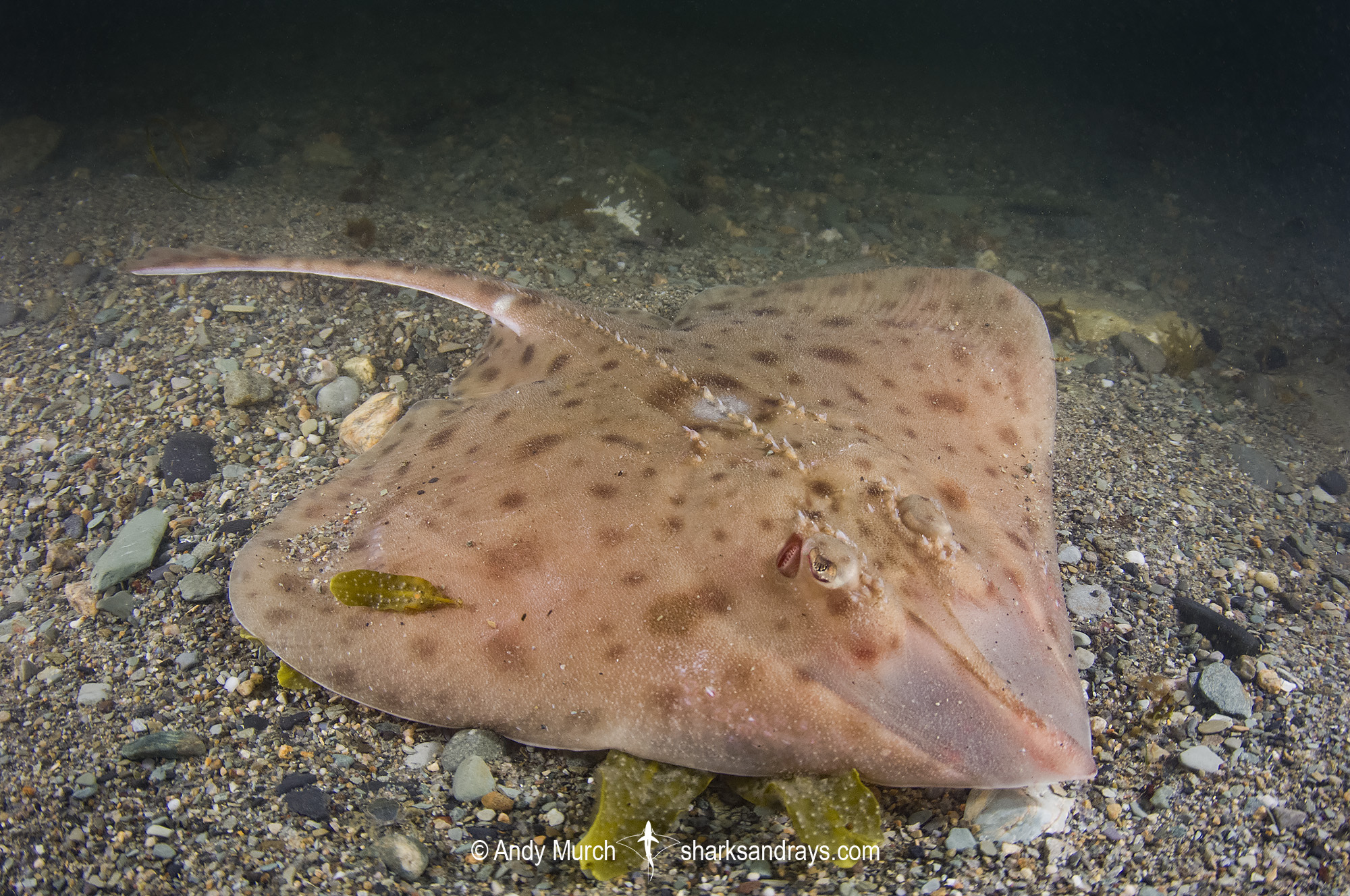Common names
Smooth Skate.
Binomial
Malacoraja senta.
Synonyms
Raja senta.
Identification
A medium-sized skate with a heart-shaped disc. Disc width 1.2-1.3 x disc length. Snout moderately long with a right-angular or slightly obtusely angular tip. Snout length 3.4-3.6 x orbit length. Anterior margins of pectoral fins almost straight; weakly undulated in adult males. Pectoral apices broadly rounded. Disc appears velvety due to a dense covering of fine denticles. Thorns present on snout, around eyes, on shoulders, and in a single row along midline, decreasing in size posteriorly and absent from posterior half of tail. No lateral thorn rows on tail. Pelvic fins deeply notched. Anterior pelvic lobe well defined but much shorter than posterior lobe. Tail narrow. Dorsal fins confluent, low, with broadly rounded posterior margins. Caudal fin small.
Colour
Dorsum light brown or grey-brown, often with scattered diffuse darker brown spots on disc, tail, and dorsal fins. Single white ocellus edged by diffuse brown spots occasionally present on midline posterior to nape. 1-2 diffuse white or pale saddles often present near base of tail. Translucent rectangular areas adjacent to rostral cartilage appear darker than pigmented disc. Ventrum white, sometimes with dusky spots.
Size
Maximum length 71cm. Length at hatching 8-10cm.
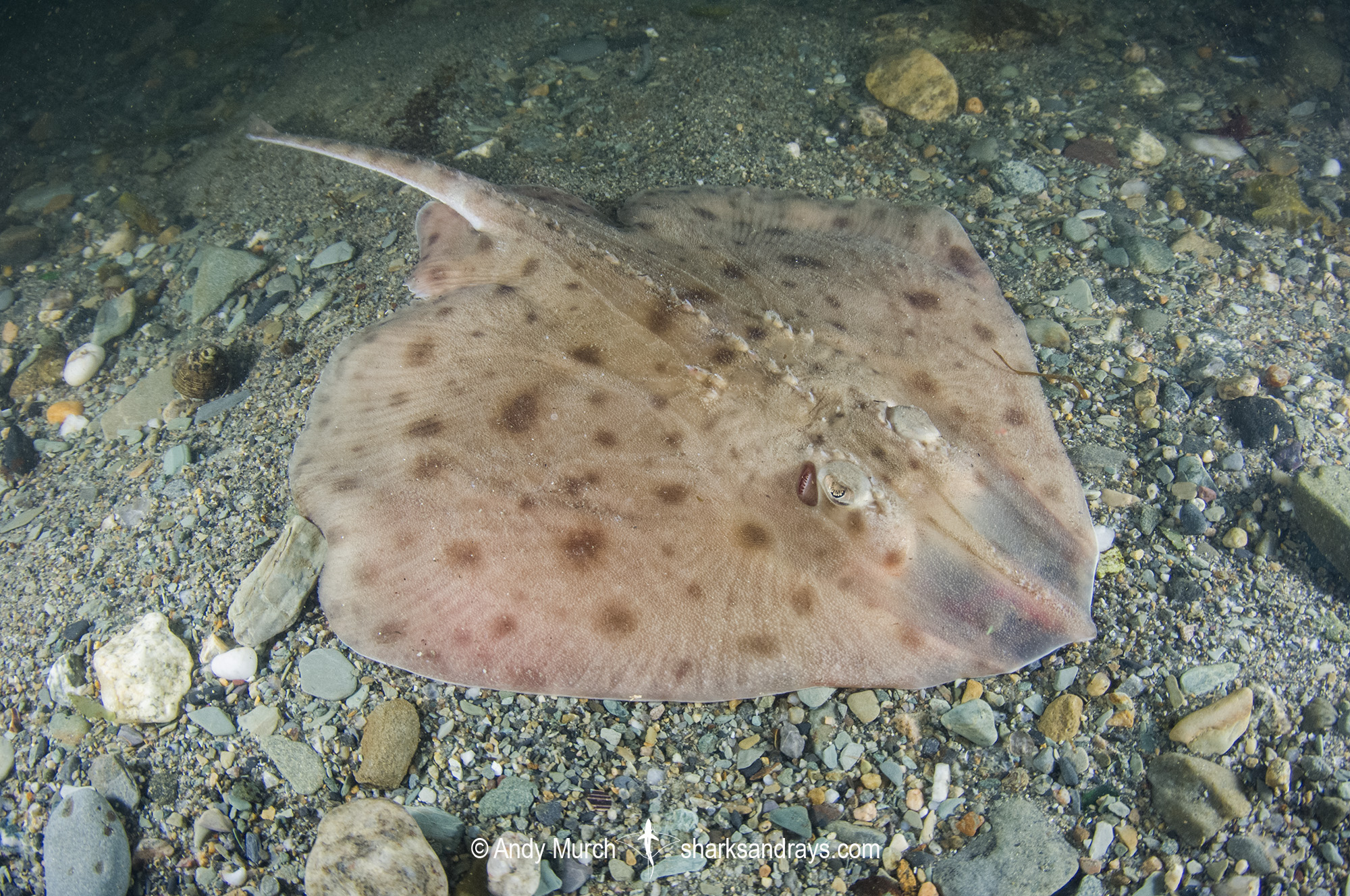
Conservation Status
VULNERABLE
The Smooth Skate (Malacoraja senta) is captured in trawl, longline, gillnet, and dredge fisheries. The smooth skate population was heavily depleted by international fishing fleets targeting shelf and slope groundfish, until the extension of the North American Exclusive Economic Zone in 1977. However, after the complete collapse of other groundfish fisheries, American and Canadian fleets turned their attention to skates in the 1980s and 90s.
Since the 90’s, there have been some signs of regional recovery on the Georges Banks and in the southern part of the smooth skate’s range. The recovery of the Grey Seal populations in the Gulf of St Lawrence has inhibited recovery in that region.
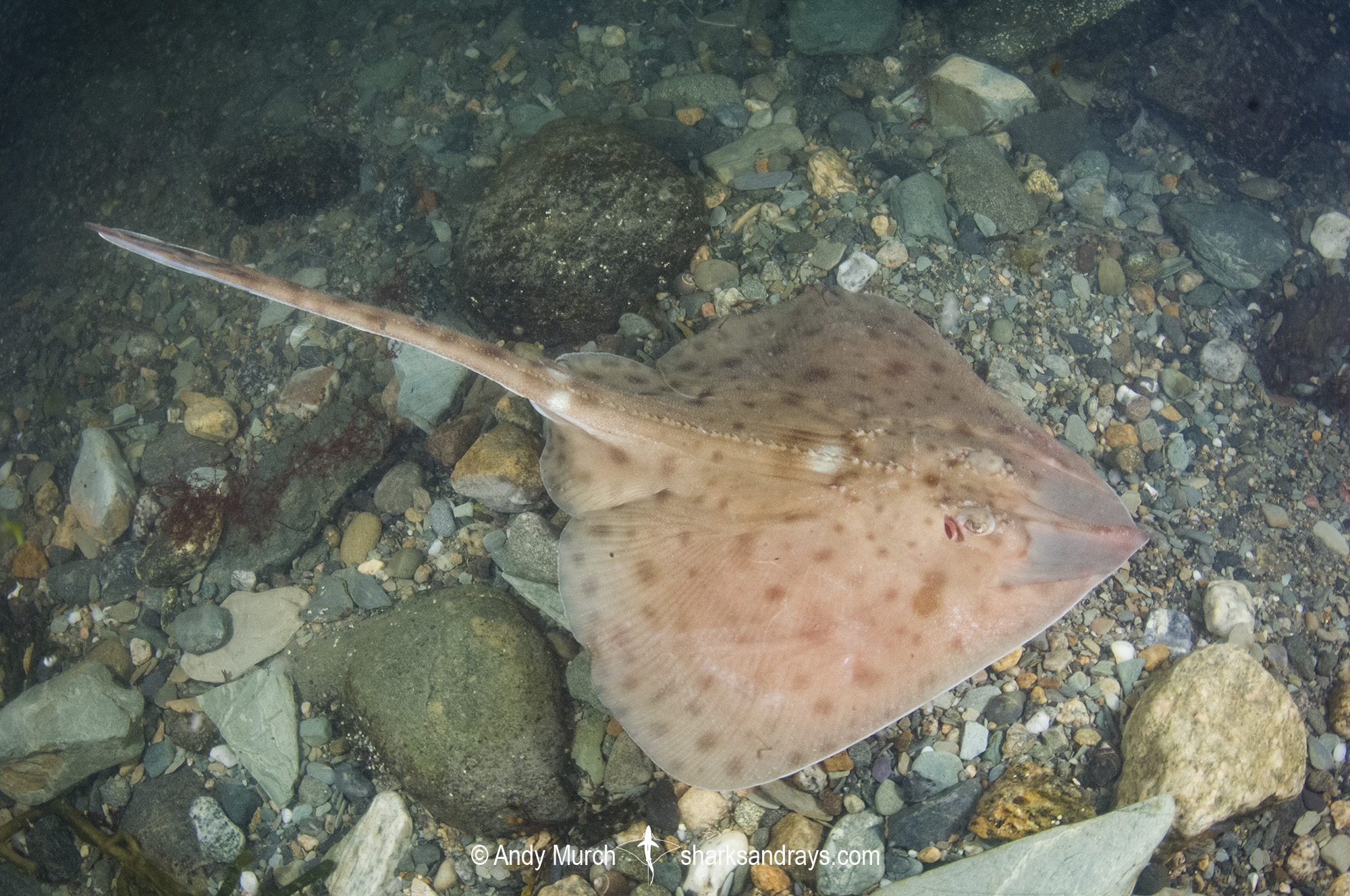
Habitat
Cold-temperate seas. Demersal on continental shelf and deep slope, occasionally inshore. From 25-1435m. Mostly from 70-480m.
Distribution
Northwest Atlantic. The Smooth Skate occurs from New Jersey, USA to northern Labrador, Canada, including the Grand Banks, Southeast Shoal, and Flemish Cap. Sub-populations disjunct.
Reproduction
Oviparous. Females mature at 9.5-14.7yrs depending on location.
Diet
Juvenile smooth skates feed mostly on small crustaceans. Adults also consume bony fishes.
Behavior
Possibly moves in/offshore seasonally but the smooth skate does not appear to undergo long migrations.
Reaction to divers
Unknown but probably slow to react to divers.
Diving logistics
Although recorded as shallow as 25m, smooth skates are generally found below 70m and are very rarely encountered by divers. The most likely way to encounter this species is probably to search on mixed sand and gravel as close as possible to recreational limits in New England during the summer months.
What’s new
View our full list of updates
Similar species
Prickle Skate (Malacoraja spinacidermis) Similarly shaped but distinguishable by plain grey-brown dorsum and lack of thorns. Occurs deeper than 450m.

